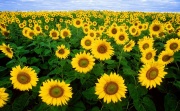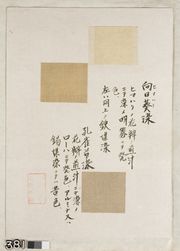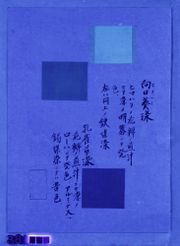Difference between revisions of "Sunflower dye"
Jump to navigation
Jump to search
| Line 14: | Line 14: | ||
* R.J. Adrosko, ''Natural Dyes in the United States'', Smithsonian Institution Press, Washington, DC, 1968 | * R.J. Adrosko, ''Natural Dyes in the United States'', Smithsonian Institution Press, Washington, DC, 1968 | ||
| − | * | + | * Economic Botany: [http://www.botgard.ucla.edu/html/botanytextbooks/economicbotany/Helianthus/index.html Expressing Achenes] [Accessed Jan. 21, 2009] |
| − | * | + | * Economic Botany: [http://www.botgard.ucla.edu/html/botanytextbooks/economicbotany/Helianthus/index.html Expressing Achenes] purple dye from seeds [Accessed Jan. 21, 2009] |
[[Category:Materials database]] | [[Category:Materials database]] | ||
Revision as of 09:48, 30 June 2020
Description
A natural yellow Dye obtained from sunflower (Helianthus annuus) blooms. Sunflowers produce a bright yellow dye in Alkaline solutions that is not lightfast. In Acetic acid solutions, however, sunflowers give a colorfast golden color on Wool with an Alum Mordant. The seeds of the sunflower plant were also used by native Americans to produce a dark purple color used for dyeing baskets.
Synonyms and Related Terms
Helianthus annuus; colorant à base de tournesol (Fr.); girasol (Esp.);
Sources Checked for Data in Record
- D. Cardon, Natural Dyes: Sources, Tradition, Technology and Science (original edition Le Monde des teintures naturelles), Archetype Publications, Ltd., London, 2007
- R.J. Adrosko, Natural Dyes in the United States, Smithsonian Institution Press, Washington, DC, 1968
- Economic Botany: Expressing Achenes [Accessed Jan. 21, 2009]
- Economic Botany: Expressing Achenes purple dye from seeds [Accessed Jan. 21, 2009]


